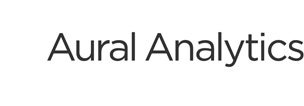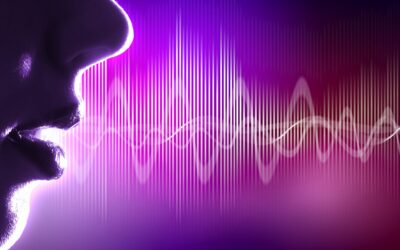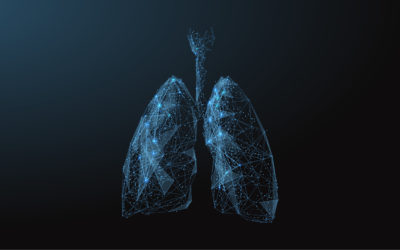Speaking our thoughts and ideas seems easy to do, but if you look closer you’ll find that complex neural networks throughout the brain and body drive speech production.
One has to first have an idea or thought they want to share, then select and order the words they want to use to convey the thought, then send messages to all of the hundreds of muscles required to turn those thoughts into understandable strings of acoustic information. This is why scientists have called speech one of the most complex and cognitively-taxing motor acts we perform as a species.
If there is a neurological glitch anywhere along these circuits, it’s detectable in either what is being said (vocabulary, syntax, ideas conveyed) or how it is being said (clarity of pronunciation, quality of the voice, and rate, rhythm and melody of the speech). With the recent advent of mobile technology, we are now in a position to continuously track changes in our speech patterns to detect concerning changes well before they are clinically-apparent. The implications of this are considerable.
Imagine you have developed a drug or therapeutic that, by all accounts, may have the potential to prevent the onset or slow the progression of a common neurological disease, like Alzheimer’s or Parkinson’s disease. How would you test the impact of your drug? Who would be your ideal study population? What information would you need to know to validate efficacy?
The answer is easy. Your drug has the best shot of being effective in the very earliest days of the disease, long before symptoms appear and brain degeneration has taken a toehold.
The good news is that there is a large window of opportunity for several neurological diseases where this pre-symptomatic period can be very long, on the order of years.
The bad news is that there is currently no way to tell which seemingly-healthy people are actually disease-free (“healthy control participants”), from those who are experiencing the very early days of the disease and not yet showing symptoms (“experimental participants”).
There currently are no blood tests, no brain imaging or brain function test, and no genetic test that can be conducted while a person is alive to confirm diagnosis for these common neurological diseases.
Read More: Check out Mayo Clinic AD diagnosis and Michael J Fox Foundation PD diagnosis
While alive, red flags aren’t raised until symptoms are noticed by an individual, their family, or their physician. And once symptoms appear, irreversible brain damage has already commenced.
“To find a cure or develop treatments that stop or slow disease progression it is critical that patients be identified and studied at the earliest possible time, ideally before significant damage has been done.”
Why Speech?
Speech neuroscientists have known for a long time that speech and language offer rich sources of information about brain health. The problem has been, until recently, all of the analytics on what is being said, and how it is being said, have been very labor intensive, taking weeks or months to extract clinically-meaningful findings.
Examining the what is said has required a manual transcription of the speech sample, followed by extraction of information about such parameters as the size of the vocabulary used; the complexity of the syntax of sentences; and the cohesion of thoughts and ideas being expressed.
Examining the how it is being said has been a matter of acoustic analysis and subjective evaluation. This has traditionally involved manual observation of speech spectrograms or perceptual evaluation of the articulation, rate, rhythm and melody of speech.
This allowed researchers to learn more and more about the links between speech and language patterns and brain health; however these approaches don’t scale and cannot be utilized effectively in most settings.
Why now?
We have learned a great deal from the neuroscience literature about how to elicit speech that maximally taxes the cognitive-linguistic and sensorimotor systems and where in speech to look for clinically relevant signal. By leveraging the power of advanced speech analytics, we have operationalized these findings into an automated and objective panel of clinically-relevant and clinically-interpretable speech outcomes that are agnostic to disease indication, device, location and language. Thus the various dimensions of speech can be easily measured in-clinic or at-home – any-time, any-where.
For example, changes in what is being said can be transient, like speaking only in short utterances when one is feeling depressed. Or, the changes might be persistent and progressive, like using more fillers (“um, er”) and repeating common phrases (“well, alright”) as Alzheimer’s disease progresses.
In the same way, how speech changes can be transient, like the slurring that might occur after a couple of cocktails. Or, they might be persistent and progressive, like speech becoming quieter, breathier, and mumbled in Parkinson’s disease.
More: Check out this TED talk on monitoring PD through phone calls and this article on how speech analytics can detect depression in Parkinson’s disease, Depression in PD.
Real World Value Creation with Speech Analytics Technology
We have a saying here: “the proof is always in the data”. A new digital biomarker is only as good as its validation, and thus its data. The lack of available clinical data in CNS makes it particularly challenging for most digital biomarker companies to validate their technologies and achieve mass adoption. We have the unique position of having built our technology on over 25 years of NIH and NSF funded research and data. Several years ago, we brought to market a new platform that would make it easy for anyone, anywhere to elicit clinical speech, and to receive objective, reliable clinical outcome measures. Since then, our partners have used our technology in interventional trials, observational studies, clinical use cases and even in consumer settings. We’ve done this in seven languages, on four continents, in-clinic and at-home with equal accuracy and robustness. This rich history has helped us identify the subset of speech dimensions that are relevant for different conditions.
Disease Diagnosis and Speech
Today, it is impossible to definitively diagnose a neurological disease from a single speech sample. However, technology developed by those grounded in fundamental speech neuroscience can deliver extremely valuable insights about a person even from a single speech sample. In the domain of digital biomarkers, and more narrowly said – vocal biomarkers, we endeavor to make speech elicitation and clinical outcomes measures easy, extensible, clinically-relevant, actionable and agnostic. By doing so, it is our belief that we will someday be able to diagnose disease using speech. The future is bright, stay tuned.





